Empower Your Marketing Strategy: Unleashing the Potential of Marketing Frameworks

For those unfamiliar, marketing frameworks are like blueprints. They are a visual representation of how you should do your marketing campaigns. In this piece though, we'll explore what marketing frameworks are and how they can turn ordinary businesses into sales powerhouses. So, let's dive headfirst into the exciting, captivating world of product marketing frameworks. Get ready to ignite your imagination and let the marketing magic begin!
What is a marketing framework?
Before we dive deep into different frameworks, it's worth defining what we are going to talk about today. So, grab your pen, and piece of paper, and write it down:
"Marketing frameworks are strategic tools. A framework serves as a visual representation of how marketing is executed in your business."
They provide a structured approach to planning, implementing, and evaluating marketing activities. They help businesses analyze market dynamics, understand customers, and create effective strategies. Also, they often look like a template or visual representation of what you’re looking to accomplish.
By utilizing these frameworks, businesses can develop targeted campaigns, make informed decisions, and drive growth in competitive markets. Wait, are these benefits of marketing strategy frameworks? They’re supposed to be in the next section…
The Benefits of a Marketing Framework
There’s a vast variety of marketing models and frameworks. They somehow remind a shared roadmap. It brings everyone together, promotes teamwork, collaboration, and a sense of unity within the marketing department.
A marketing framework is not a fancy addition to your regular working routine, though. It plays a vital role in more than just keeping everyone on track. Sure, companies and teams grow quite fast, especially on fruitful projects. Still, keeping everyone on track requires communication and good management of it.
Here comes our hero of the day! By setting up a marketing framework, you establish a universal guide that helps every team member understand their long/short-term tasks and priorities overall.
Speaking of the actual benefits, let’s highlight a few, but we’re sure they fluctuate from team to team depending on different variables.
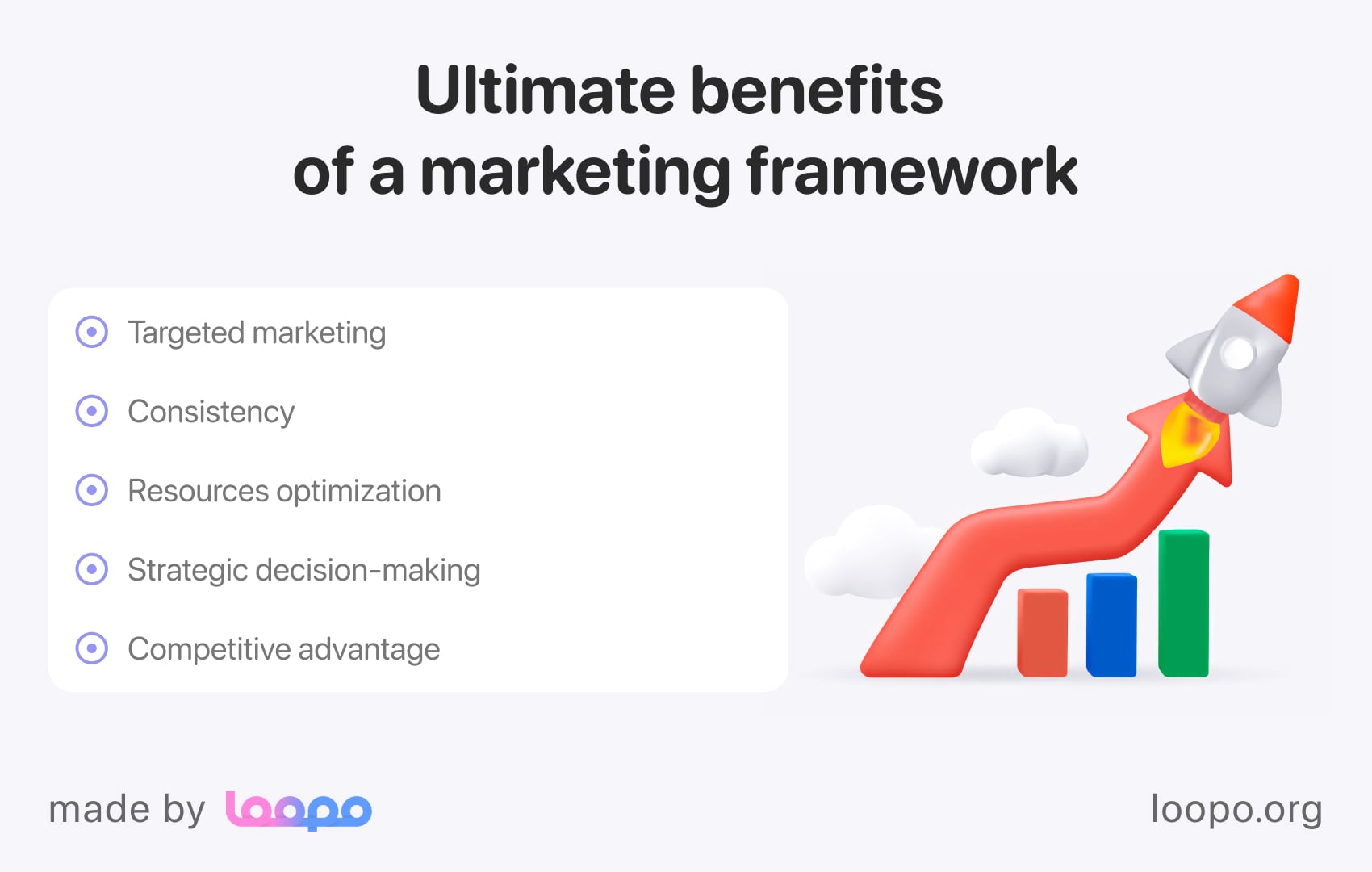
- They create room for targeted marketing. They help you understand what makes your customers tick and enable you to tailor your marketing efforts to specific customer segments. This means you can create campaigns that hit the bullseye, leaving a lasting impact and making a real connection with your audience.
They provide consistency. It ensures that all your marketing activities and channels harmonize together seamlessly. By keeping your marketing messages and branding consistent, it creates a unified and captivating brand image that resonates with your audience.
They help optimize resources. A smartly chosen marketing framework can help businesses make the most out of their resources. Whether it's budget, time, or manpower, they provide guidance on how to allocate these precious resources efficiently. By using a framework, you can ensure that every penny, minute, and team member is put to good use, maximizing the return on investment for your marketing initiatives.
They foster strategic decision-making. Making informed and strategic decisions is a winning approach, always. Frameworks provide a systematic process for analyzing market dynamics, understanding customers, and identifying competitive advantages.
They bring you to another level of competitive advantage. With content marketing frameworks in tow, businesses can become masters of the competitive jungle. They gain a deeper understanding of the playing field and uncover the unique value propositions that set them apart from the pack.
Top 10 marketing frameworks
Now that all preparatory steps are taken, you are ready to dive deeper into the best marketing frameworks! We sincerely hope you will find the marketing models we chose useful and at least one of them will find a place in your strategy (hope you won’t get sick of acronyms).
AIDA
The first acronym of the day, the AIDA framework is a four-step process that shows you how to grab the attention and interest of potential customers, leading them to take action and achieve your desired outcomes.
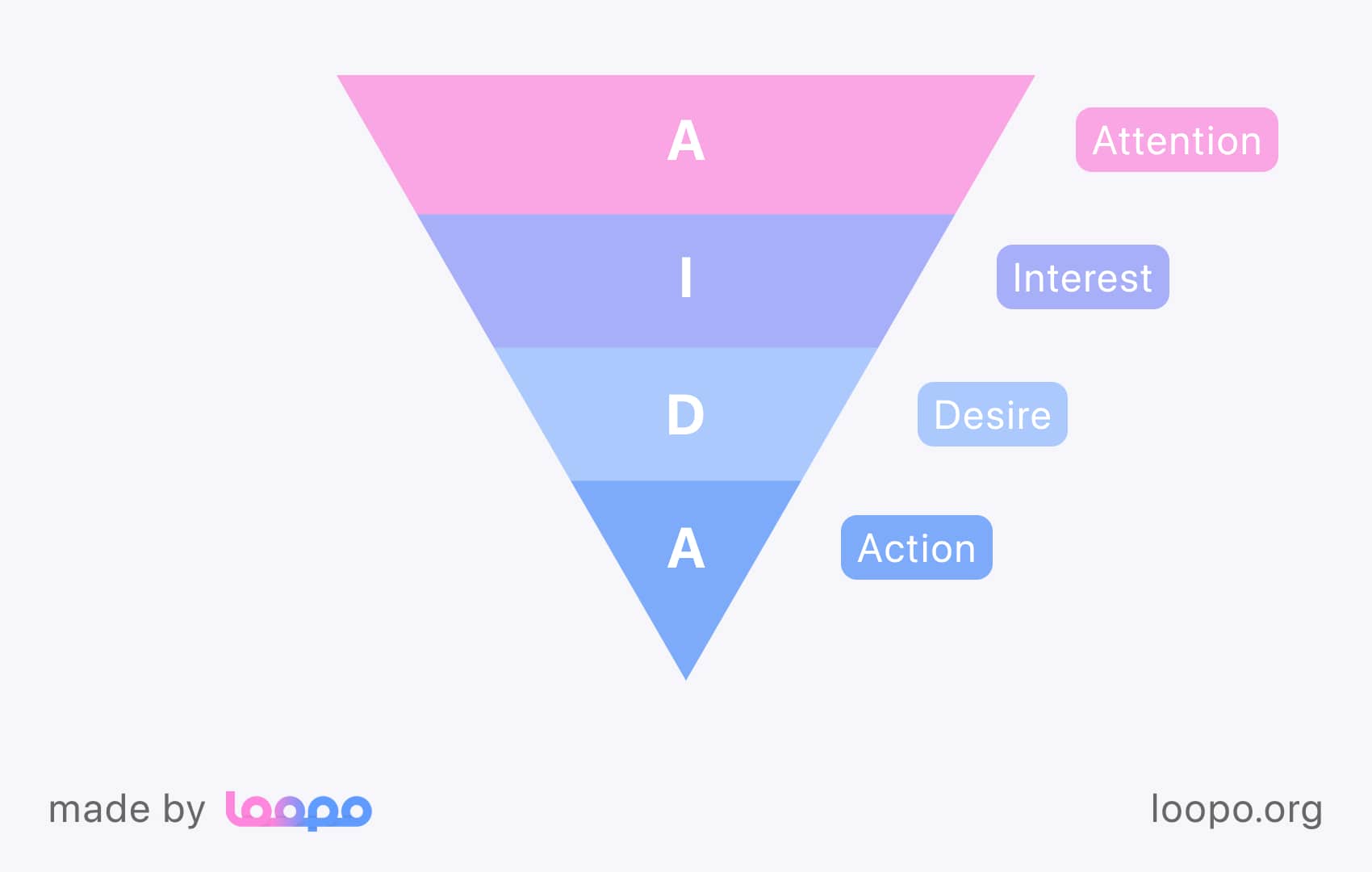
Attention
Getting noticed is key! Capture the attention of your target audience by creating awareness and drawing their focus to your product or service.
Interest
The attention is not enough! You must also know how to keep users engaged. Spark their curiosity by providing compelling details and information about what you offer. Make them interested and excited to learn more!
Desire
With both attention and interest in place, it’s about time to cultivate desire. It is important to make your users not just aware of your product but eager to have it. Show them how it can fulfill their needs and desires, solve their problems and ease their pain.
Action
Once attention and interest are here and the desire is cultivated, it’s time for action! This means your marketing campaign has to encourage your customers to take the next step, whether it's making a purchase, signing up for a newsletter, or engaging further with your brand. Guide them towards converting their interest and desire into tangible actions.
In terms of crafting a marketing roadmap, this simple framework can be your best friend. Actually, the four clear steps it fosters are easy to understand and thus to implement.
Pirate Metrics or “AARRR!”
Pirate Metrics, also known as "AARRR!" is one of the most popular marketing models. It is a super fun framework that doesn't require you to wear an eye patch or have a parrot on your shoulder (unfortunately).
Developed by Dave McClure, Pirate Metrics helps you understand how customers navigate their buying journey and highlights areas for improvement.

For those unfamiliar, AARRR is an acronym. Each term, in this matter, represents aspects you should look at. Here’s what it would look like:
Acquisition. How do people discover and see your marketing campaign? It is through ads, cool blog articles, paid searches, and many other things.
Activation. What are the steps users do when they land on the product you advertise? Surely enough, they sign up, snag a free giveaway in exchange for their email, fill out a user profile, or simply browse.
Retention. Do people tend to come back once they leave your product? How often do they return and what exactly do they return for?
Revenue. How do the customers bring income to the product you promote? In this matter, metrics like customer lifetime value (LTV), conversion, and churn rates are extremely useful to review.
Referral. When your customers are over the moon with joy, they can't help but share the love with others. This means more customers for you, and it's a win-win! Plus, it lowers your customer acquisition cost (CAC) because your loyal fans are spreading the good word.
Now, the final question appears. Why do you need those Pirate Metrics? Figuratively speaking, they are neatly organized treasure maps of insights into your customer journey. Analyzing them can reveal a hell lot of bottlenecks and issues that you need to address ASAP.
7P’s Mix
The 7P model is like a friendly guide that helps you navigate different stages of your business strategy, from alpha to omega, from the initial idea to evaluating its success.
As you might’ve guessed, there’s a reason it is called 7 Ps.

Just as in AARRR Metrics, P’s represent questions you have to answer in order to understand every aspect of your strategy and then optimize it to perfection.
People. Who's involved in making your business shine?
Identify the key individuals responsible for production, promotion, and distribution.
Price. How much will it cost?
Set a price that works for you and your customers, considering your pricing strategy. You need to find a balance between making it affordable for users and fruitful for the company.
Place. Where will you sell your fantastic product?
Think about the best places and channels to reach your customers. You can always combine them, or emphasize only a few.
Product. What awesome things are you selling?
Take a moment to define and understand your product or service, what value it brings, and what problems people have making them want to purchase it.
Process. How will you get your product or service to your customers?
Map out the processes and operations needed to deliver top-notch experiences.
Promotion. How will you let everyone know about your incredible offering?
Plan your marketing activities and find creative ways to reach your target audience.
Physical Evidence. How will you show customers that your business is trustworthy and reliable?
Consider elements like your branding, packaging, and customer testimonials.
After all, the 7P framework reminds acupuncture, which targets all potential pain points. It’s a simple yet very effective framework to analyze and improve every aspect of your business strategy.
McKinsey 7S Framework
Ironically, after the 7Ps framework, there’s also a framework called 7S!
The McKinsey 7S is a framework put to life by the brilliant minds of business consultants Robert H. Waterman, Jr. and Tom Peters. This model is all about assessing a company's overall health and its chances of thriving in the future. It does so by examining the strength of its internal structure.
The internal structure of a company is influenced by seven key elements, neatly divided into two categories: the hard elements and the soft elements.
‘Hards’ are easy to identify and handle. ‘Softs’, on the other hand, are always more difficult to manage, but they are the foundation and are more likely to create a sustained competitive advantage.
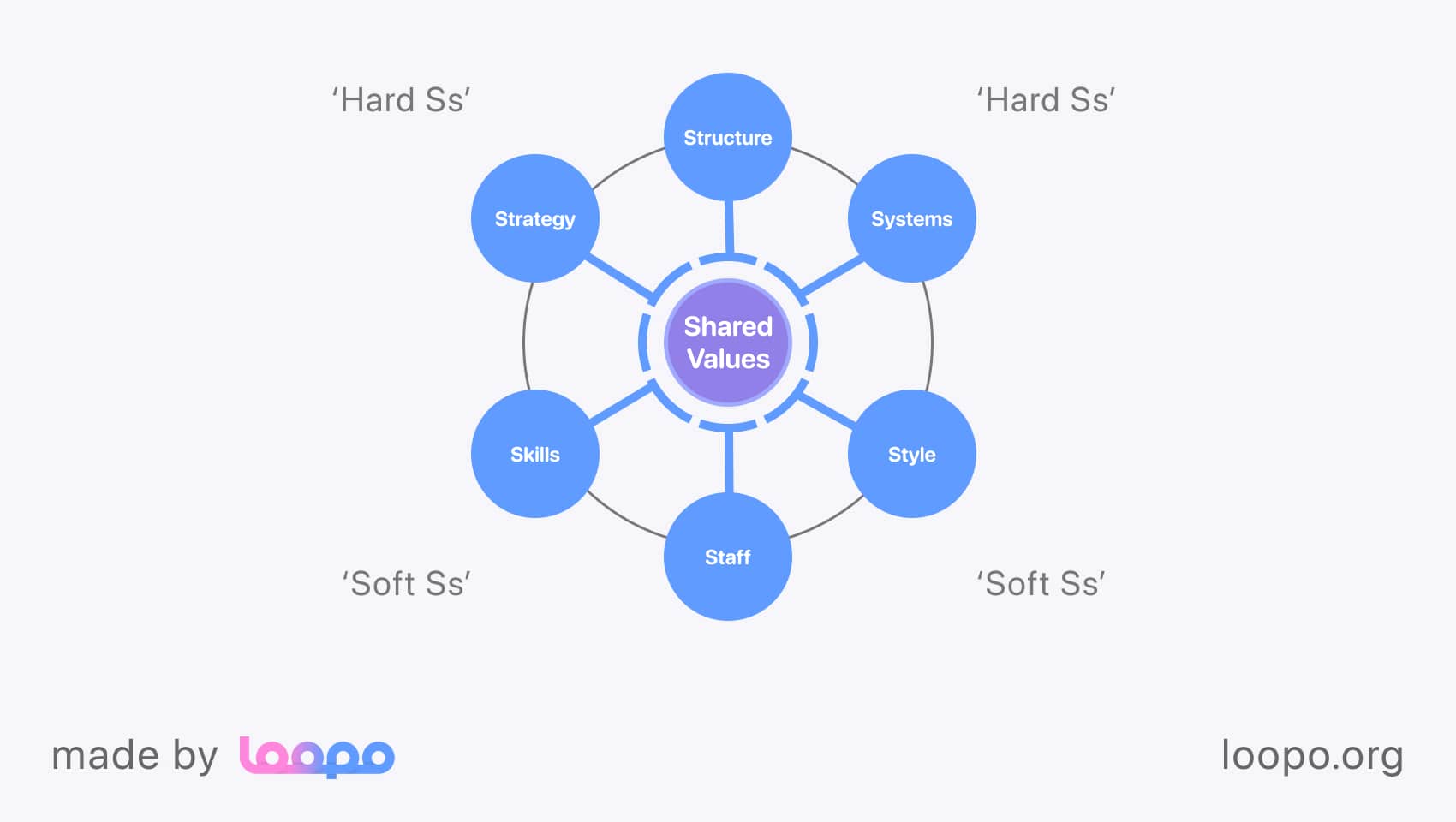
Speaking of hard elements, they are as follows:
Systems: The processes and procedures that keep everything running smoothly.
Strategy: The game plan that guides the company's decisions and actions.
Structure: How the organization is organized and its hierarchical setup.
Soft Elements, in turn, are here:
Skills: The capabilities and competencies of the company's workforce.
Style: The leadership style and overall culture that shape the company's environment.
Staff: The people who make up the organization and their roles.
Shared values: The core beliefs and guiding principles that unify the company.
By analyzing and aligning these seven elements, the McKinsey 7S Framework provides valuable insights into a company's internal dynamics and sets the course for a prosperous future. It's like having a trusted advisor by your side, ensuring your business sails smoothly toward success.
STP Model
STP marketing, which stands for Segmentation, Targeting, and Positioning, is a framework honed to reach the right customers in the most effective way.

It's a three-step model that helps you understand your products or services and how to communicate their benefits to different groups of customers. The formula this framework to is quite simple too, here’s how it works.
Step 1: You break down your market into smaller segments
Step 2: You create targeted marketing campaigns tailored to each group's preferences
Step 3: You adjust your positioning to match what they want and expect.
As simple as that! It's like having a personalized marketing plan for every type of customer! In terms of marketing, personalization is EXTREMELY important. For instance, Forbes once collected stats about personalization, revealing that 71% of users feel frustrated when their shopping journey is impersonal.
In a nutshell, STP marketing is all about connecting with your audience on a deeper level and delivering exactly what they're looking for.
Porter’s Five Forces
While STP’s main concern is about personalization, Porter’s Five Forces framework focuses on profitability. In this matter, ‘five forces’ stand for exactly five economic aspects that influence the industry.
So, what are those five forces?
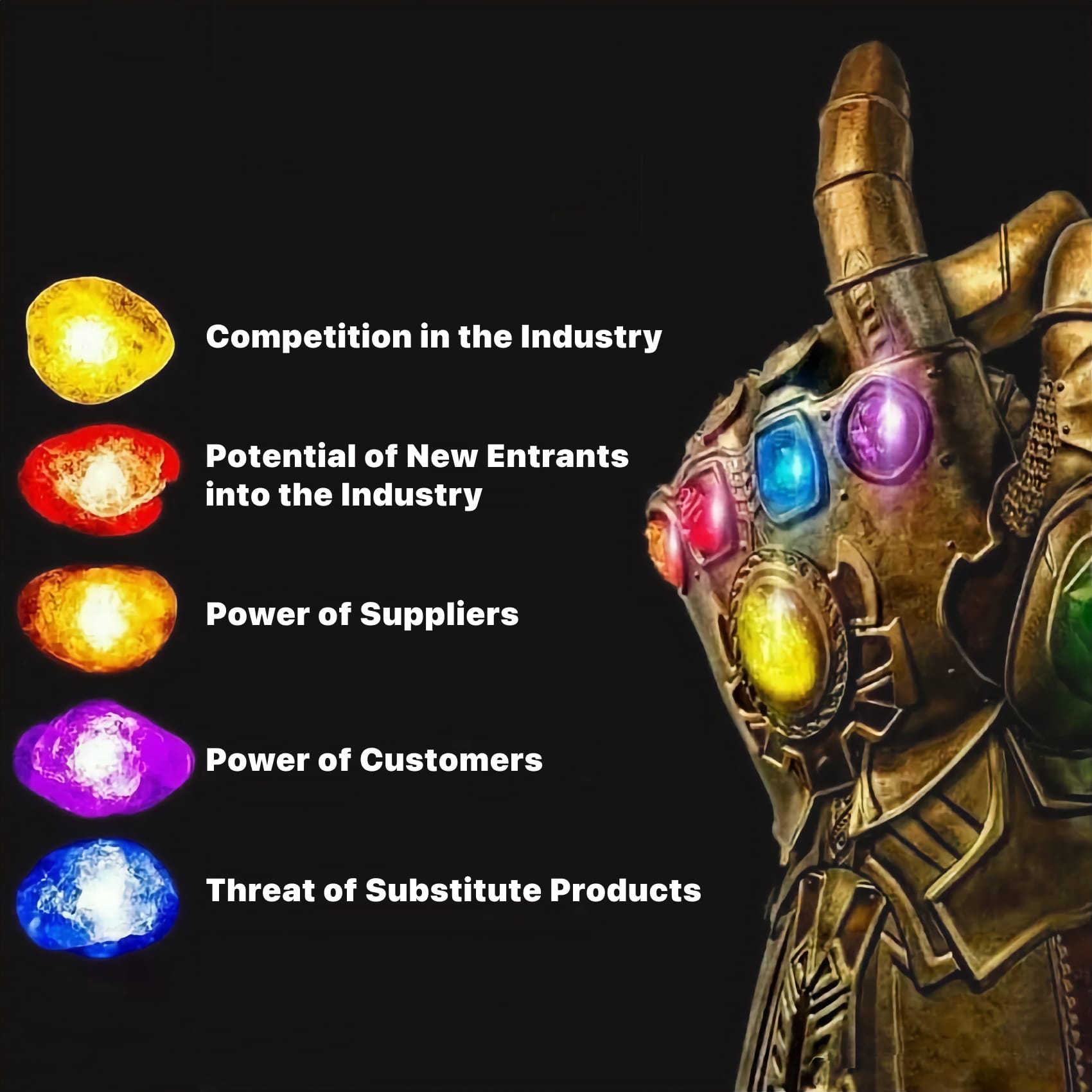
Alright-alright, we know they’re hard to read on the image. Let’s try again. Porter’s Five Forces include:
Competition in the industry;
Potential of new entrants into the industry;
Power of suppliers;
Power of customers;
Threat of substitute products.
To make those forces make sense, let’s cover each in more detail.
Competition in the industry
This force analyzes if there are lots of companies offering similar products or services. It can be tough to stand out and make big profits. On the flip side, if you're in a less crowded market, you have a better chance of making good money.
Potential of new entrants into the industry
This force looks at how easy or difficult it is for new businesses to enter your industry. High barriers, like needing lots of money or facing strict regulations, can keep new players away. But if the barriers are low, you might have to deal with more competition popping up.
Power of suppliers
Here, we consider how much influence your suppliers have over your industry. If you rely on just a few suppliers who have something unique, they can call the shots and potentially raise your costs or limit your resources.
(It's like when your friend has the only lemonade stand at the park and can charge whatever they want! (because they have no competition!))
Power of customers
This force is all about analyzing customers and how much control they have. If they have plenty of options and can easily switch to a competitor, they hold the power. They might demand lower prices, better quality, or excellent customer service. You'll need to make them happy to stay ahead.
Threat of substitute products
This one considers the alternatives to your product or service. If there are similar options out there that are cheaper or more convenient, customers might choose those instead.
In the aftermath, careful analysis of these forces allows you to understand a lot about the market your marketing campaign targets. It also creates room to spot opportunities and stay ahead of potential challenges.
PESTLE marketing framework
This framework is quite different from others. Mainly because it targets external factors that can influence the marketing campaign’s performance and effectiveness. By following the factors it fosters, you can strategically plan your moves, like timing product launches or making important business decisions.
Traditionally, let’s decipher the acronym.
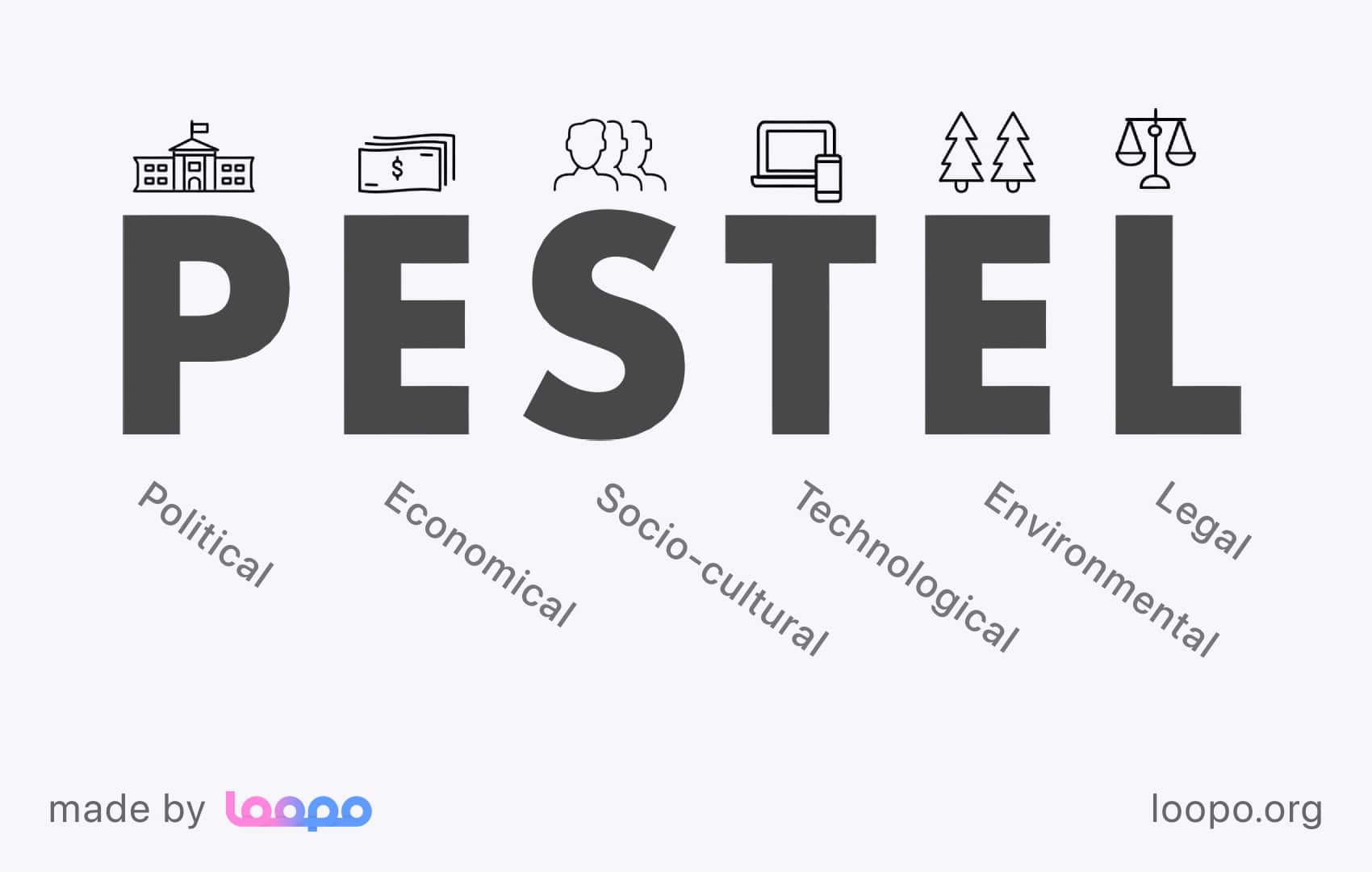
Political
No matter how hard you want to avoid politics, it can strongly impact your marketing models, business, and products. So, take a look at the political environment, including government policies and stability, to see how they can influence your business.
Economical
This aspect highly varies depending on the location. Following the principle, you have to understand market trends, inflation, and consumer spending patterns to make more informed decisions about your business's financial aspects.
Socio-cultural
Delve into the social and cultural aspects of your business environment. To elaborate, consider demographics, societal values, and cultural trends that shape consumer behavior.
Technological
Keep up with the latest technology! Assess how advancements and innovations can impact your business operations, product development, and the overall industry landscape.
Legal
Boring as hell, but extremely important. Make sure you consider legal factors that can affect your business and ensure you stay compliant with the necessary requirements.
Environmental
It may not be straight relevant to marketing, but if your campaign promotes physical products, you must care about ecological considerations. For instance, try to find out how climate change, resource availability, and environmental regulations, can affect your campaign.
The PESTLE framework had several iterations over time. Started as the ETPS model, and it went through different versions. Now it's settled as a very comprehensive framework that allows you to shift focus from marketing to other considerations worth attention.
The RACE Framework
Aren’t you already tired of acronyms? There are only a few left. Now, let’s talk about the RACE framework developed by the co-founder of Smart Insights, Dr. Dave Chaffey.
Dr. Chaffey composed the framework based on four essentials:
Reach. This stage focuses on getting your brand in front of as many people as possible. Think SEO, engaging content, and social media ads to grab attention and make your brand known.
Act. This step is to encourage your audience to take meaningful steps. With captivating website design, irresistible calls-to-action, email marketing, and social media charm, you'll inspire them to click, sign up, and engage with your brand.
Convert. This stage is all about turning those engaged prospects into loyal customers. At this point, you need to create personalized emails, smart remarketing tactics, persuasive landing pages, and trust-building customer testimonials.
Engage. Once your customers are yours, it's vital to nurture those relationships. In this matter, personalized communication, loyalty programs, and top-notch customer support can easily do the trick.
In a nutshell, the RACE represents a well-rounded digital marketing framework. It can cover all bases of the customer journey.
BANT Framework
Back in the 1950s, IBM came up with a clever framework called BANT to uncover promising opportunities.
This framework serves as a guiding light for businesses to assess and qualify leads - those individuals who show interest in collaborating with your company. By applying the BANT framework, you can efficiently prioritize the most promising leads. But before doing so, let’s decipher the last acronym of the day!
So, the BANT framework consists of four main parts:
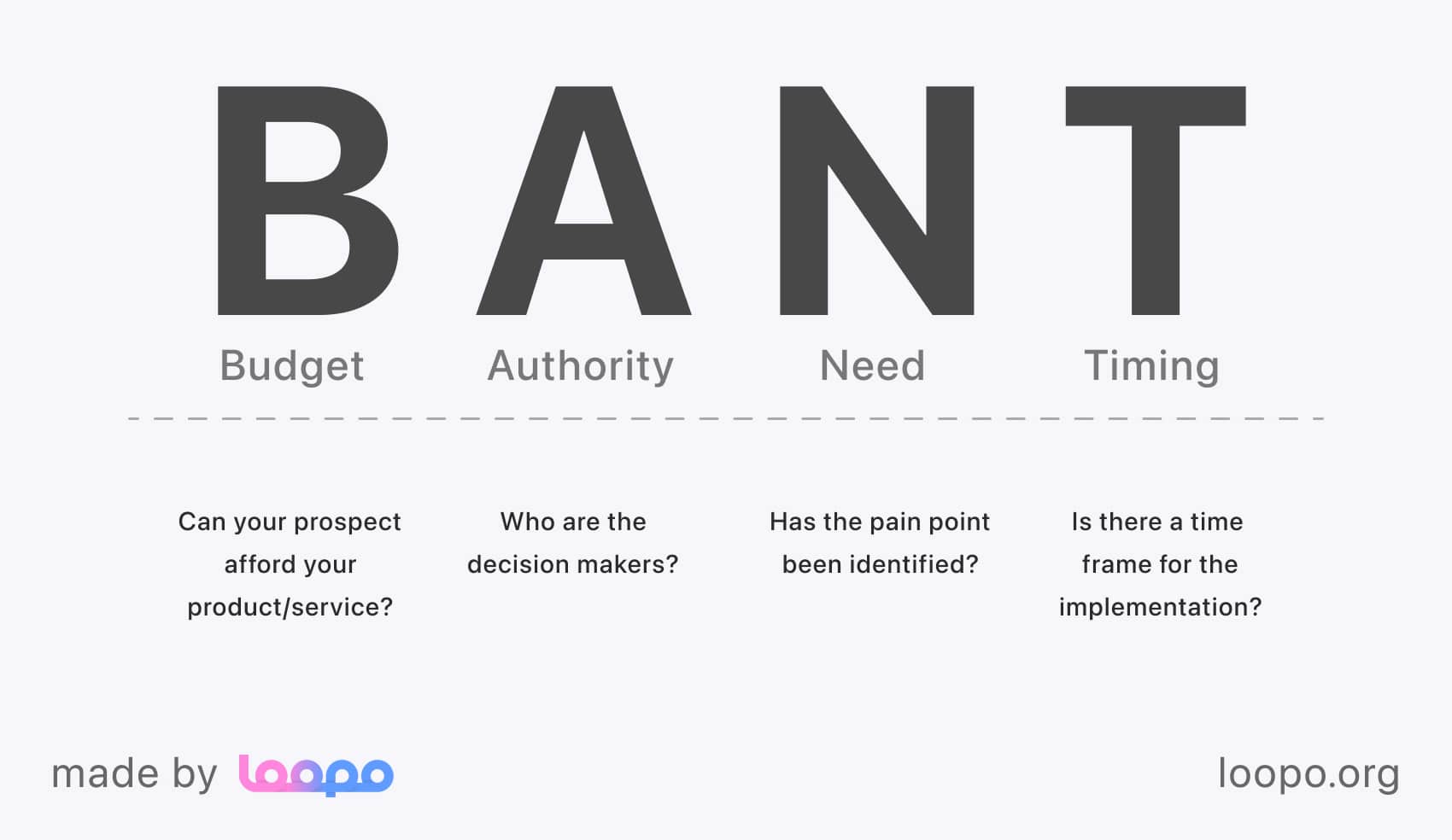
Budget
This part identifies whether the leads you acquire as a result of the marketing campaign are capable to partner with you. It identifies whether they have enough resources for partnership.
AuthorityThis step implies understanding the position of the person you're communicating with. Is the person you're communicating with the decision-maker or someone who holds influence over the purchasing decision?
Need
The ‘need’ variable allows you to figure out what specific challenges or pain points can your business address, or help alleviate for the potential client.
Timing
This step answers everything time-related. How long the cooperation may take? When does the lead intend to make their purchase or enter into a partnership?
After reading about BANT, you may wonder why you need it at all. Well, here’s how it is beneficial for you. The framework empowers you to identify the most qualified leads, ensuring you invest your time and resources where they will yield the greatest results.
How to choose one for your business
In this piece, we’ve covered many different frameworks marketing campaigns can benefit from. Some of them target the marketing campaign performance, some target lead generation, and some – other things. Consequently, there’s no ultimately ideal framework that will do everything for you.
Instead, following the review of marketing frameworks, you should make a choice depending on the current needs you have. In this matter, there are bits of advice you’d better follow to make a moderate decision. Even better, you have to ask yourself questions.
- What is the impact and the outcome I want to achieve?
Make sure you clearly see and pinpoint the specific areas where you want to see the greatest impact from your marketing endeavors. Explore the most effective strategies to achieve that outcome. Finally, choose a framework that best reflects your goals.
- What’s the role of a marketing campaign in the work I do? Is marketing strategy a top priority or there are other aspects?
Understand how marketing plays a role within your organization and how it contributes to overall success.
- Where’s the point when I reach success? How can I define success?
‘Success’ itself is a vague term, meaning that you may have different objectives or expectations. Make sure you define what you want to achieve with your marketing campaign and establish measurable indicators to track progress.
Bottom Line
At last, we’re here to conclude everything about marketing conceptual frameworks in this article. Firstly, we sincerely hope you realize the importance of forgetting the question:
“Why do I need a marketing framework?”
Instead, we hope you started asking yourself about:
“Which marketing framework should I choose?”
Secondly, by carefully considering your business priorities, the role of marketing, how you define success, your team's capabilities, and the impact you want to achieve, you can choose a framework that fits your unique needs.
Remember, it's important to regularly evaluate and customize your chosen framework to ensure it continues to deliver results. Also, if you are a busy marketer like us – make sure you plan your pitch about frameworks with a Loopo task manager!




